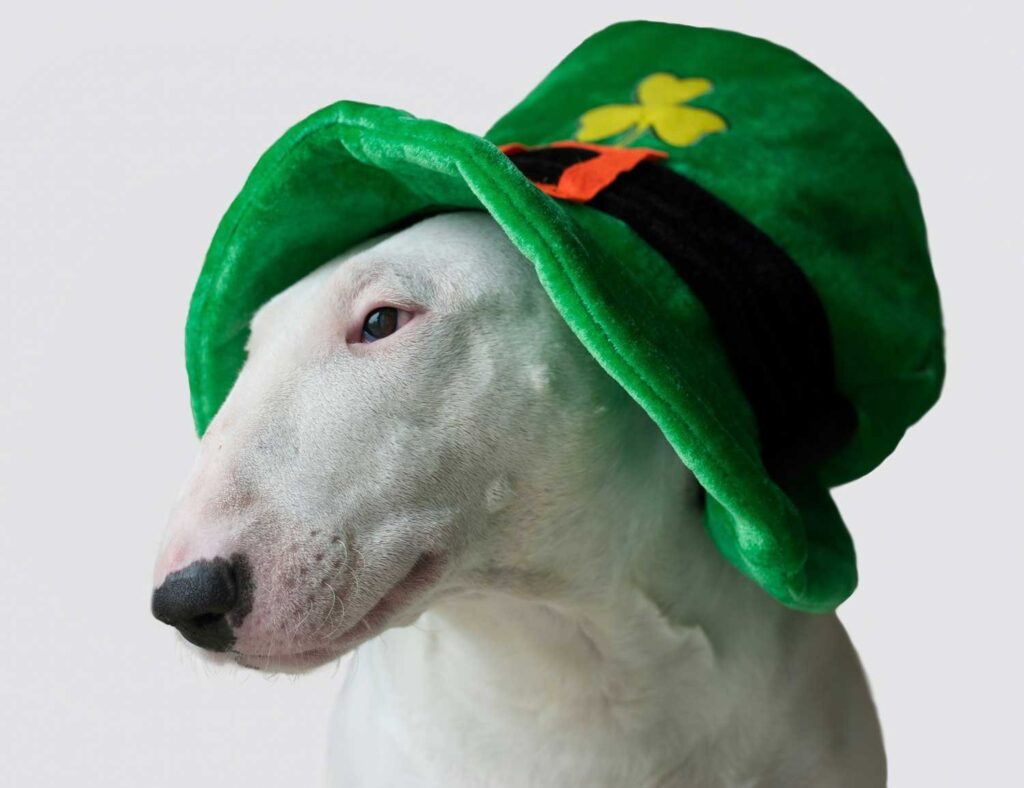DVM Blog Post – Enrichment: Exercise for the Brain (Dogs)
August 15, 2024
Enrichment is a very important part of our pets’ lives that helps them lead a more fulfilled life, but also can help use up energy! We often think about “getting out energy” as taking your dog on a run – but this isn’t always the answer. We shouldn’t rely on physical activity alone to fulfill our pets’ needs: Pets need mental stimulation in many ways to lead fully enriched lives.
Enrichment is only enriching if the pet finds it to be so – what works for one pet doesn’t work for all. For example, some humans may find running engaging and enjoyable; others may jog for a short period of time but stop due to disinterest or boredom; others may flat out refuse or stop abruptly due to frustration. Just because we want to enrich our pets lives a certain way doesn’t mean that we’re actually accomplishing that goal. Long story short: enrichment is only helpful if the pet likes it – find what works best for them!
Let’s start with some common ways to go about enrichment:
FOOD PUZZLES
One of the easiest ways to incorporate enrichment on a daily basis is using food. Pets do not need to eat meals from a bowl. Many pets get their meals spread into “treat” dispensers and food puzzles. Others have their meals spread throughout the day to use as rewards for training.
You might be surprised to find how activities like sniffing and food puzzles, though low-energy, can tire out your pet!
You can find food puzzles and snuffle mats for purchase online, OR create your own!
- DIY: make a puzzle out of cereal boxes, Pringles cans, rolled up towels (alone or stacked standing up in a box), empty tissue boxes, paper towel rolls, and other household items
- Commercial Examples: Omega Paw Tricky Treat Ball, Kibble Nibble, Kong Wobbler, Tug a Jug
- Choose a toy of appropriate difficulty. A puzzle that is too hard can cause frustration.
- Watch their body language.
- As a side note: watch this great video about dog body language from Fear Free!
- Use part of your pet’s meal in the toy or for a game instead of treats – to avoid obesity from excess calories
SNIFFING
Sniffing is an important component of filling a dog’s emotional cup. How often does your dog give you a “sniff down” when you get home? Sniffing is a great way to explore, in the home or out!
- Walks with ample sniffing provide better for mental stimulation (if your dog enjoys it) and can be more fulfilling than a long, brisk walk “for exercise”.
- Toss a treat into different areas to help get your dog sniffing!
- Do a lawn snuffle
- Bring new scents home. Things can be gathered anywhere! A few ideas:
- small twigs or leaves from a friend’s garden
- seaweed or shell from a trip to the beach ○ a rag rubbed over a friend’s pet (or a sheep or a horse if you have easy access!)
- a bag from the gym
- SAFETY: Prevent consumption by putting things in little mesh bags/sachets or a box/container with holes if your dog tends to consume things that aren’t food
- Visit various environments such as: alley ways and low-traffic parking lots, industrial and commercial zones, rural and agricultural areas, beaches and walking tracks.
- REMEMBER: do this ONLY if your pet is comfortable.
- Doggie Language by Lili Chin is a great, illustrated way to learn body language
- Go on a rucksack walk
- A full “rucksack walk” incorporates a sniffy walk on a long lead, a recall game circuit, investigating items in the Rucksack, followed by a sniffy walk home
- Tailor it! Bring a sniff sack home for your pup. It can be altered for any situation. Only a short period of time is needed, and always focus on quality over quantity.
- Always adapted to the individual needs of the dog
- Inside, engage in a game of Find It, Scatter, or Snuffle Cups (paper/solo cups or small flower pots set upside down on the ground with treats under some of them).
WHILE RESTING
Keeping pets calm and quiet during a rest or post-operative period can be challenging, but engaging the brain can be extremely helpful. Low-energy activities can safely tire out your pet during the recovery period and beyond!
- Incorporate food puzzles and games into your pet’s daily routine (recommendations above!)
- Play controlled game of Find It, Scatter, or Snuffle Cups (solo cups set upside down on the ground with treats under some of them) inside.
- Stand outside (in a calm environment) or take short walks (if medically permissible) and allow ample stationary sniffing. Do a lawn snuffle.
- Bring a sniff box/sack home (see above!)
- Work on training and tricks like Shake, Touch/Target, Leave It, Drop It, and Go To Place (if appropriate based on injury/surgery).
SENIOR PETS
Some enrichment activities that work well for younger and middle-aged pets aren’t suitable for senior pets, such as those with mobility limitations.
- A sniff box is a great way to enrich our senior pets.
- Fill it with leaves, sticks, rocks, and plant material from outside. Gathering from different areas of the outdoors on various days can bring in new scents. It may just look like the same old mulch to us, but you never know the additional scents that might be on it!
- Trade it out with other novel smells
- SAFETY: Prevent consumption by putting things in little mesh bags/sachets or a box/container with holes if your dog tends to consume things that aren’t food
- If your pet likes food games, trade old ones out for ones that require less motion
- Activities everything can be tailored to a specific pet’s evolving needs!
WHAT ABOUT CATS?
Enrichment is extremely important in cats too! Stay tuned for a future post about feline enrichment.
WANT TO LEARN MORE?
Enrichment goes much deeper than what we’ve mentioned here – but these are great places to start. If you’re interested in learning more, chatting with a behavior-focused licensed technician is a great idea!
- Alex is our behavior-focused LVT at CAC – contact her directly at alex@clarendonanimalcare.com for scheduling
- Fusion Animal Behavior (Alyssa Cary, LVT)
- The Mindful Mentor (Jessey Scheip, LVT, VTS (Behavior), KPA-CTP, FFCP)
VIDEOS & PODCASTS:
- Video: Activities & Enrichment 101
- Video: Training as Enrichment
- Podcast: Unleashing New Ideas for Dog Enrichment
- More resources here: https://www.fearfreehappyhomes.com/content-library
Written by Dr. Corinne Plough



